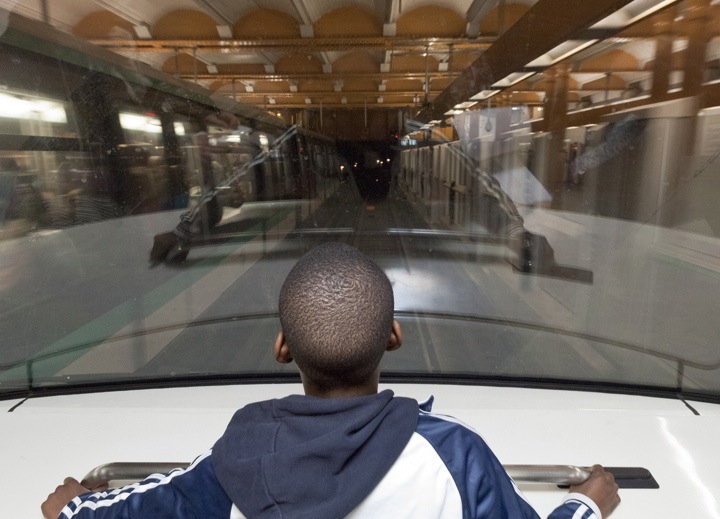See the invisible man save energy all over Paris


 As SmartPlanet's Bryan Pirolli reported recently, Paris started operating driverless subway trains on its storied, 112-year-old Line 1 last November. Now Siemens, the German engineering company that supplied the trains and automated system, has released photos of the new Metro cars in action, posted here.
As SmartPlanet's Bryan Pirolli reported recently, Paris started operating driverless subway trains on its storied, 112-year-old Line 1 last November. Now Siemens, the German engineering company that supplied the trains and automated system, has released photos of the new Metro cars in action, posted here.
The 10.5-mile Line 1 carries up to 725,000 daily passengers to well-known spots, including the Louvre, the Bastille, Tuileries Gardens, Arc de Triomphe and Champs-Elysées (sorry, no Eiffel Tower). Currently 14 driverless trains ride its rails, with a total of 49 planned by 2013. Siemens claims the automated system decreases waiting times from 105 seconds to 85 seconds, and that it can easily alter frequency as needed.

 At least one other benefit: it reduces energy consumption because it allows Paris' transit authority, RATP, to switch trains off overnight, according to Siemens. Previously, RATP had to leave trains running in the depot in order to keep their GPS and status data current. The new trains can easily get their bearings when they switch on in the morning, which adds that automated trains on Paris' 14-year-old Line 14, have reduced energy consumption by 15 percent.
At least one other benefit: it reduces energy consumption because it allows Paris' transit authority, RATP, to switch trains off overnight, according to Siemens. Previously, RATP had to leave trains running in the depot in order to keep their GPS and status data current. The new trains can easily get their bearings when they switch on in the morning, which adds that automated trains on Paris' 14-year-old Line 14, have reduced energy consumption by 15 percent.
If it all looks or feels strangely familiar to those of you who haven't set foot in Paris recently: The same Siemens Trainguard MT CBTC system is or soon will operate on the L train in New York City, Line 9 in Barcelona, Line 4 in Sao Paulo and Line 1 in Algiers and LInes 2 and 4 in Budapest.
All photos from Siemens except Metro sign, from Fabio Venni via Wikipedia/Flickr
Previously on SmartPlanet:
- UK railways: All aboard the unaffordable express!
- Siemens steels CO2
- Paris metro makes conversion to driverless trains
This post was originally published on Smartplanet.com

